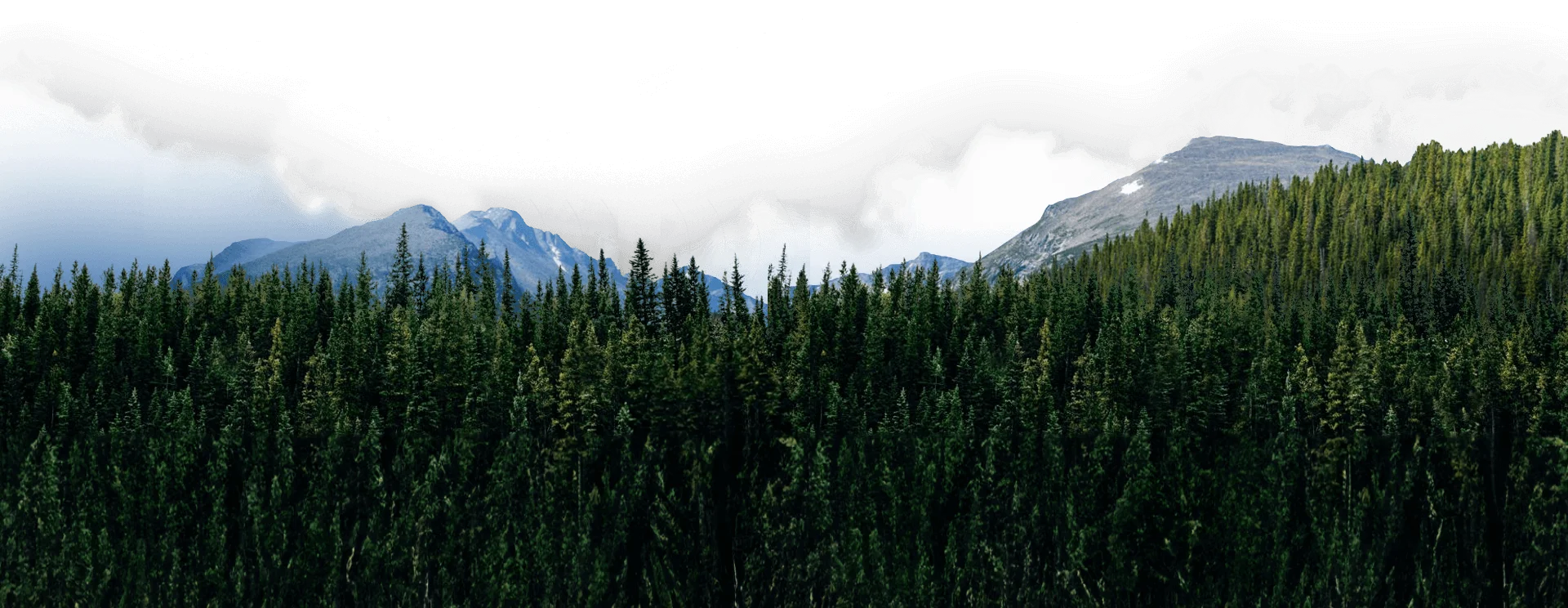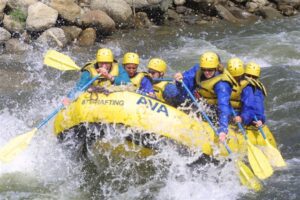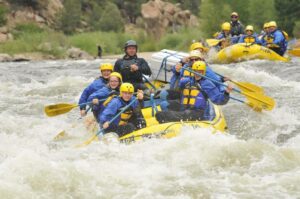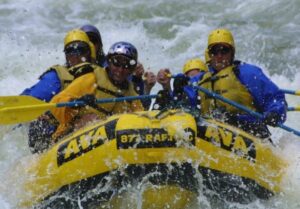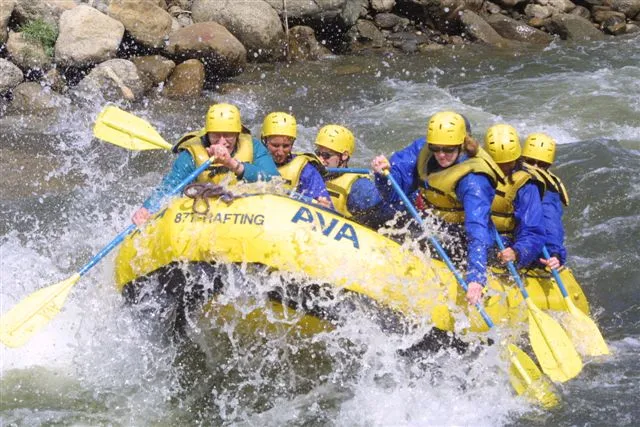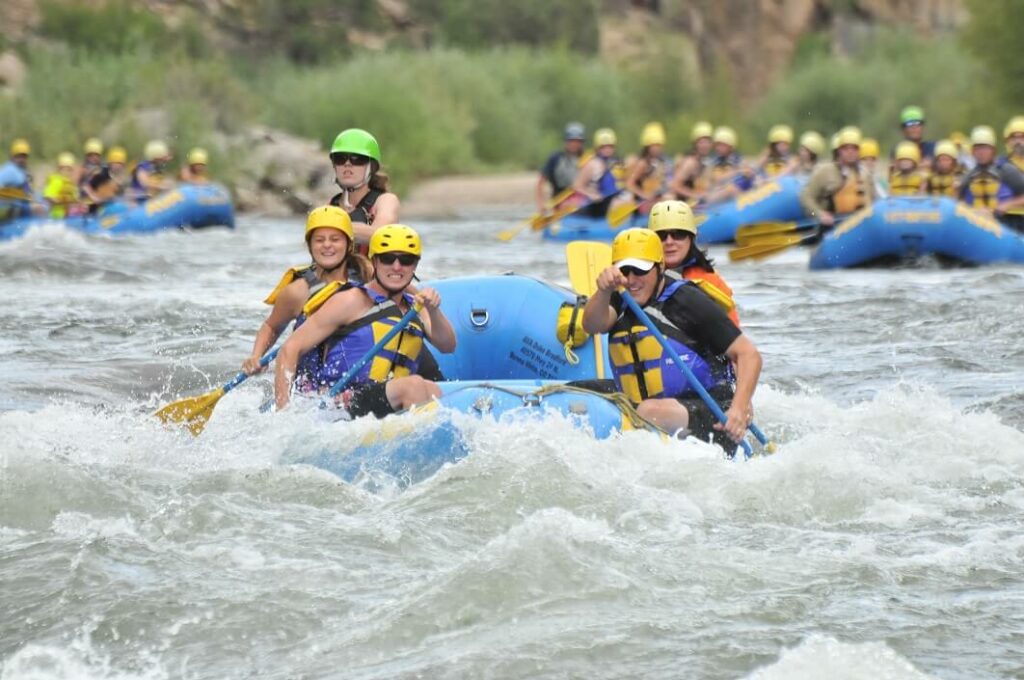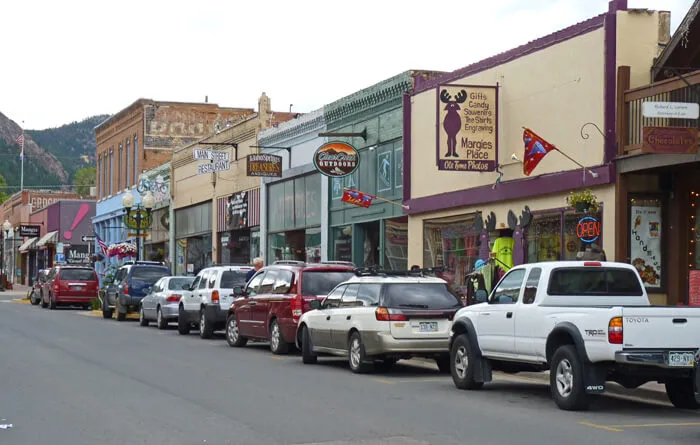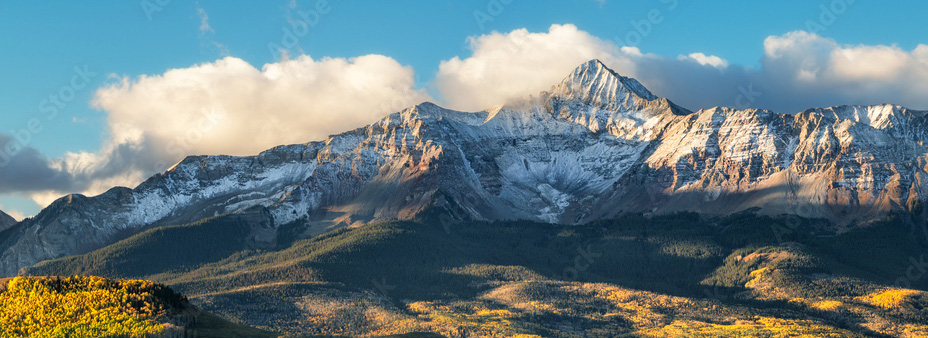Colorado has earned a legendary reputation among white water enthusiasts for good reason. With its towering mountains, surging rivers from snowmelt, and rugged canyon terrain, the state is a must-visit for adrenaline seekers from around the world. If you’re drawn to the idea of tackling extreme white water rafting, chances are you’re picturing roaring rapids, tight maneuvers, and a raw connection to nature. Colorado delivers all of that!
What many people imagine when they hear “extreme white water rafting” doesn’t always line up with the reality on Colorado’s rivers. There’s more nuance, more cold water hazards, and more complexity involved than a hashtag or highlight reel can convey. That’s why AVA Rafting & Zipline, Colorado’s premier white water outfitter with over 27 years of local guiding experience, is here to set the record straight.
But here’s what most people don’t realize about Colorado’s extreme rapids: “Extreme” means something completely different in Colorado than in other parts of the country. The state’s rugged terrain, technical rivers, and high-altitude environment create a whitewater experience that requires a level of respect and preparation that goes beyond most thrill-seeking narratives.
Why Are People Drawn to “Extreme” White Water Rafting?
There’s a primal draw to fast-moving water and the chaos it promises. It taps into a deep human urge for challenge and triumph. In today’s social media world, this urge is amplified.
#BucketListGoals and drone-shot heroics flood timelines or your FYPs, feeding the perception that conquering Class IV or V rapids is just another adrenaline badge to collect. Adventure marketing turns these river runs into cinematic moments but rarely shows the full picture. And that disconnect can lead to risky assumptions.
In Colorado, search and rescue teams respond to approximately 250–300 white water-related incidents annually. That number isn’t just a cautionary statistic, but it’s a reminder that expertise matters more than enthusiasm when it comes to whitewater rafting safety.
Understanding the psychological draw helps us recognize why so many people underestimate Colorado’s rivers and why a completely different approach is necessary here.
Decoding Colorado’s White Water Classifications
Not all Class IV rapids are created equal. In fact, a Class IV in Colorado often demands far more technical skill and awareness than the same rating elsewhere.
Why a Class IV in Colorado Isn’t Like Anywhere Else
Let’s compare:
- West Virginia’s Gauley River is known for its high-volume, powerful drops. But it’s largely “pool-and-drop” with deep water and clear breaks between rapids.
- Colorado’s Numbers section on the Arkansas River, a Class IV+, offers continuous, technical challenges. Narrow channels, sharp boulder fields, and unrelenting current require quick thinking and precise maneuvering.
Other key distinctions:
- Geography: Colorado rivers often snake through steep canyons with minimal access for rescue operations.
Altitude: Most extreme sports rafting take place at 7,000–9,000 feet, making physical exertion much harder. - Whitewater Rafting Temperature: Even in July, water temperatures hover between 45–55°F, thanks to snowmelt origins.
The Hidden Variables That Determine Difficulty
- Flow Levels: Colorado’s rivers change dramatically throughout the season. A rapid you ran last week at 600 CFS might feel completely different at 1,200 CFS.
- Rescue Access: Some sections on both the Arkansas River and the Colorado RIver are hours from the nearest emergency response, which dramatically raises the consequences of a swim.
- Consequence Management: A flip on a Colorado river – even on a Class III – isn’t just a wet inconvenience it can turn into a Class V scenario if you’re not equipped to self rescue fast.
Previous extreme whitewater rafting experience doesn’t automatically translate to success or safety in Colorado. In some cases, it can create dangerous overconfidence.
Common Misconceptions That Lead to Dangerous Decisions
“I’ve Conquered Class V Elsewhere” – The Dangerous Assumption
We hear it all the time: “I’ve done the Gauley at full release,” or “I paddled Chile’s Futaleufú.” That’s impressive but it doesn’t mean you’re ready for Colorado’s unique challenges.
Why? Because high-volume rivers allow more margin for error. Colorado’s technical rapids demand surgical precision. One misstep and you may be in a place your guide can’t reach.
Real-World Scenario: A group of experienced paddlers from the Southeast flipped in Pine Creek Rapid. Accustomed to deep, forgiving waters where they can simply float to safety, they underestimated the swift current and rock hazards of Colorado’s narrower rivers. Fortunately, they had listened to their guide’s safety briefing about self-rescue and were able to swim to safety, avoiding getting sucked into a hole or pulled into a strainer. Had they simply floated, they could have encountered the dangers of white water rafting firsthand.
Seasonal Realities vs. Year-Round Expectations
It’s tempting to book an extreme river rafting trip any time of year. But Colorado’s most powerful flows typically happen during peak snowmelt in late May through mid June. In many years, the water will peak at levels too high to run safely, so the best time to raft big water is immediately before or after these closures.
Early in the spring and late in the summer, many rivers become too low, although you can sometimes enjoy a more technical run at these levels..
AVA adjusts offerings accordingly, not to limit your fun, but to ensure you’re whitewater rafting safety. That’s what true expertise looks like.
The Physical and Mental Reality of Colorado’s Extreme Rapids
Think you’re ready for rafting on extreme rivers? It’s not just about heart. It’s about preparation, both physical and mental.
Physical Prerequisites Most People Underestimate
Here’s a simple benchmark: Can you jog a mile and swim ten laps in a pool?
If that sounds tough, that’s the point. In Colorado, self rescue is often the only option. You can’t count on a guide to reach you fast enough in many sections.
Other physical challenges:
- High Altitude Illness: At 8,000+ feet, your heart rate spikes faster. Decisions get fuzzy quicker.
- Cold Shock: That initial plunge can cause gasping, confusion, and muscle lock — especially for first-timers.
- Stamina: Continuous paddling means fewer breaks and quicker fatigue.
Mental Preparation for Continuous Technical Challenges
Eastern rivers often allow recovery between rapids. Not in Colorado. Unlike pool-and-drop rivers, Colorado’s extreme runs offer few recovery opportunities.
Some mental thoughts:
- Processing rapid-fire decisions when adrenaline peaks
- Building comfort with sustained exposure to consequences
That’s why AVA encourages gradual progression. Take on a Class III+ like Browns Canyon first. Understand the rhythm of Colorado rivers before jumping into Gore or Pine Creek.
Building confidence over time isn’t just safer. It leads to a more satisfying, sustainable adventure.
How AVA Approaches Colorado White Water Responsibly
We’ve spent over two decades guiding Colorado’s rivers. And if there’s one thing we’ve learned, it’s this: just because we can run a river doesn’t mean we should.
Why We Don’t Guide Every River We Could
AVA has long been known as the advanced whitewater experts, running more Class V white water than anyone else. Several years ago, we deliberately chose to stop guiding certain runs, in particular Gore Canyon, because the risk/reward balance doesn’t favor commercial trips. Gore is considered the most advanced stretch of whitewater in the state of Colorado and one of the most advanced in the country, and it simply doesn’t translate to a safe commercial whitewater trip.
When we still ran trips on Gore, we required a swim test, including pulling yourself into the boat, before we let anyone join a commercial trip, but even with that vetting, there’s a certain degree to which paddlers need to understand what they will be facing (like a 6-foot waterfall).
Gore Canyon is thrilling for expert paddlers, but guiding guests there would compromise safety.We have determined that directing our guests to sections like Pine Creek and the Numbers provides the right level of excitement that we can responsibly execute.
Our Safety Standards vs. Industry Norms
Here’s how AVA leads the industry:
- Guide-to-client ratios: Lower ratios on Class IV+ trips to ensure maximum supervision.
- Proper safety orientation: the best way to keep people safe is to make sure they are prepared for any situation they might face. We provide an in-depth orientation on everything from proper paddling, to avoiding foot entrapment, to what to do in a highside, to how to self rescue
- Fitness assessments: even most Class V sections do not require prior experience (with the exception noted above). The experience of our guides and the safety orientation make extreme whitewater accessible IF you have the right level of physical fitness
- Adjustments based on conditions: one of the things that makes white water so exciting is that it’s different from day to day and from month to month. The Numbers at 600 cfs is very different from the Numbers at 1800 cfs. We adapt to the river. Sections will close completely at certain levels. Certain sections will involve portaging (taking the boat out of the water and going around a rapid or set of rapids). Age minimums may increase.
- Guide qualifications: All AVA guides go through an extensive training program, including 3x the required number of river hours before they check out to guide. Our Class IV and Class V guides have years of experience and sometimes decades. Because we are the advanced whitewater experts, even the guides who do not yet commercially guide Class V trips have the opportunity to train at a level that no one else does.
- Emergency protocols: In addition to CPR and First Aid, many on our staff have Swiftwater Rescue certifications. Staff are trained on rescue scenarios, and many have experienced real rescue scenarios – sometimes for other companies and sometimes for private boaters. We also add safety kayakers to our trips as needed.
These aren’t just policies, they’re the backbone of safe adventure.
Choosing Your Colorado Adventure: A Guided Approach
“Extreme” shouldn’t mean reckless. It should mean extraordinary because it pushed your limits, not because you barely made it.
Finding Your Ideal Challenge Level
AVA offers a wide range of trips, designed to align challenge with experience:
- Advanced Class IV Trips: The Numbers and Pine Creek for more aggressive paddlers and those who’ve built up from Class III+.
- Intermediate Thrills: Browns Canyon and Upper Clear Creek with technical rapids and high engagement perfect for a family-friendly rafting trip.
- Beginner to Family-Friendly: The Gold Rush or the Upper Colorado with exciting, scenic, and safe tours for a broader range of ages and abilities.
What Genuine Extreme Looks Like with Professional Guidance
With the right guide, the real deal feels like:
- A mental chess match dropping at up to 200 feet per mile
- Consistent paddling with quick progress through multiple rapids
- Teamwork that bonds strangers instantly
- Mastery over chaos, not survival despite it
We recommend aiming for peak season from late May to early July if you’re craving high water or potentially midseason when there won’t be high water closures.. Or, build your skills in technical waters during lower-flow months and return next season for more.
Making the Right Choice for Your Colorado Adventure
To recap:
- Colorado’s rivers are unique, technical, and often misunderstood
- “Extreme” here doesn’t mean cinematic moments. It means real skill, real risk, and real reward
- Choosing AVA means choosing decades of expertise, proven whitewater rafting safety, and unmatched respect for Colorado’s wild rivers
- Who should not go white water rafting? First-timers who are not physically or mentally prepared
So if you’re drawn to extreme white water rafting, start by understanding what Colorado truly offers.
Let AVA guide you with skill, with honesty, and with the kind of thrill that earns its name the right way.
Ready to start your adventure?
- Explore Class IV-V Trips
- Learn About Our Safety Standards
- Build Your Skills Over Time
Because the most unforgettable experiences are the ones you’re truly ready for. Why choose AVA? Thrill meets expertise. Every time.
Meet Mitchell, the newest member of the Outlaw team, who’s always on the lookout for hidden gems—whether that’s in a thrift store, at the most aesthetic coffee shop, or the next marketing campaign! Social media is his one true passion, and writing and telling stories has always accompanied it. When he’s not typing away on his next great story or blog post, you can find him at Wash Park playing grass volleyball or rollerblading at a safe speed.
His motto? “Smile, it’s always in style!” A perfect reminder to keep things light, positive, and full of good vibes—just like his approach to life, marketing, and writing!
